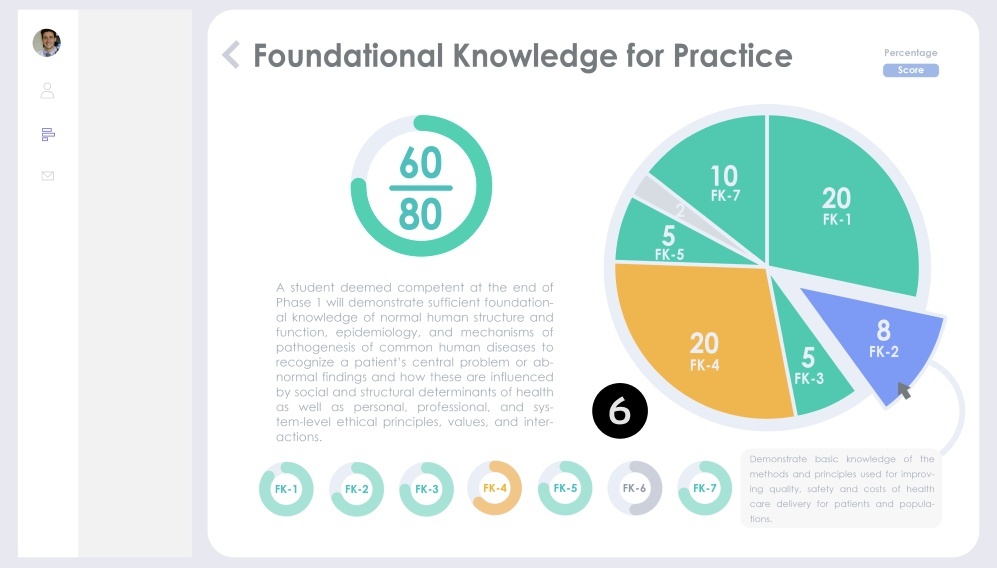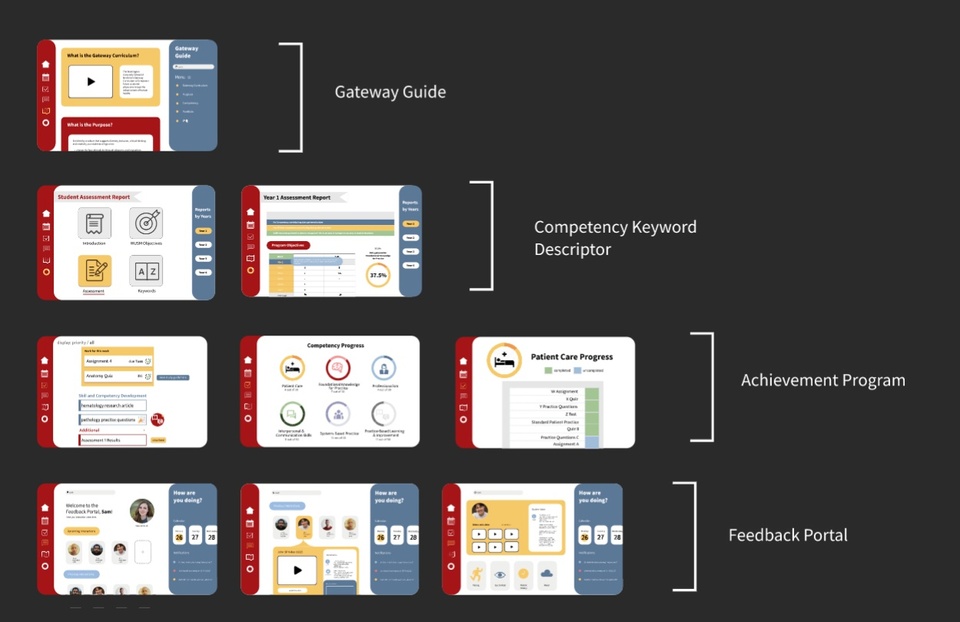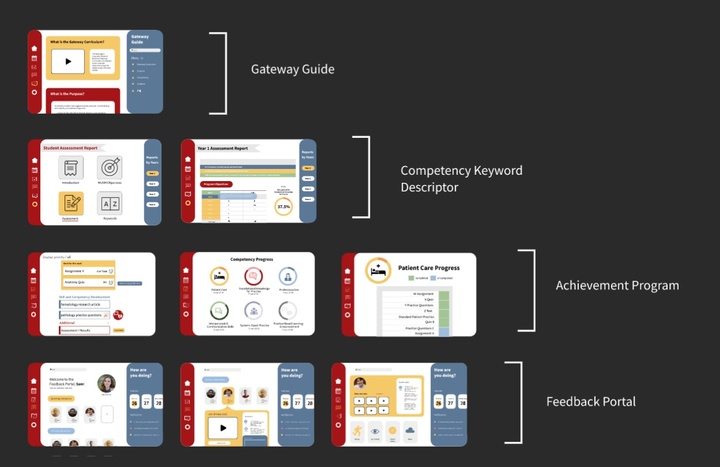Thanks to
Dr. Carolyn Dufault
Dr. Amanda Emke
Dr. Tom De Fer
Dr. Nichole Zehnder
First-year medical students who shared their experiences and feedback
Interaction Design: Understanding Health & Well-Being
2021-09-16 • Liz Kramer

Image of a screen mock-up created by Sophie Roberts, Wolf Chen, and Bob Zhao.
Spring 2021 design course lead by lecturer Annemarie Spitz
When the world around us is designed with care, attention, and the behaviors and needs of people in mind, it can impact the outcomes of health and well-being. In Interaction Design: Understanding Health & Well-Being, students from across the University learned the basic principles and processes of designing products, environments, systems, and services.
Each semester, the course works with a partner to address a challenge that requires the tools of human-centered design. In spring 2021, they partnered with WashU’s School of Medicine to support the School’s latest efforts around training the next generation of doctors.
“This was a great opportunity for students to engage with a partner’s real challenge while also practicing the cross-disciplinary collaboration that is so central to interaction design in professional practice,” said course instructor Annemarie Spitz. “Our project partners were so generous in sharing their experiences, ideas, and feedback! With their support, each student team was able to design features and components that specifically addressed challenges and opportunities of different users.”
As part of their education, medical students must achieve competency on a wide range of skills, which they gain through formal instruction, informal instruction, work in clinical settings, and other assessments. Through a recent revamp of the curriculum, the School of Medicine has organized the training of new doctors around demonstrating attainment of specific competencies.
Developing a curriculum based around competency learning requires a team, including students, faculty coaches, and a Competency Attainment Committee. To help these groups visualize the progress of students, the School of Medicine developed a digital tool called a competency portfolio. In the future, the tool might gather, compile, analyze, and display relevant and actionable data related to each student’s progress over time, as well as provide opportunities for faculty coaches to identify areas of concern before there are serious issues.
The interaction design students were charged to understand the needs and motivations of the stakeholders involved in this effort, and create concepts for a future competency portfolio tool that reinforces the competency-based curriculum and engages medical students in understanding and tracking their progress over time.
“The medical competencies project was really intriguing to me because I had never had the opportunity to work on a project with a real client before,” said student Sophie Roberts, who is studying architecture. “I’ve also never gone through the design process in such a practical and real setting. I’d learned about how to do user testing and things like that, but to be able to gain real-life experience and apply it to a project that goes beyond the classroom was really educational.”
In order to understand more about the needs and motivations of the stakeholders, students conducted research to ground themselves in the conditions. They talked with current medical students, reviewed the practices of other medical schools, and talked with faculty from the School of Medicine. From what they learned, they were able to identify specific design considerations that they could implement into their project.
“I loved the iterative nature of the competency project,” said junior Seana Chambers, who is studying finance with minors in human-computer interaction and design. “My initial brainstorming was informed by research, but fairly speculative. It was through team discussions and conversations with students at the School of Medicine that we were able to get a better picture of the actual needs of those we were designing for and hone our ideas from there. Every round of interviews or user testing resulted in new ideas or changes to existing ones, and it was cool to see the gradual progress as we gained more and more information.”
Throughout the course, students worked on connecting with others, starting conversations from a place of curiosity, and empathizing with others—skills critical to interaction design, but also applicable to a wide range of other fields.
“I’m interested in pursuing design research after graduation, so there was a pretty direct overlap in what I gained from this class and what I plan to focus on in the future,” said Chambers. “Broadly speaking, I believe that interaction design is a field that links to any and all other studies and interests. These were significant skills that will help me personally. The professional overlap for me is just an added bonus.”











